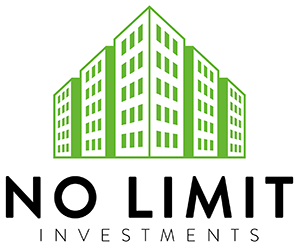What Does Real Estate Leverage Mean and Why Does It Matter?
Real estate leverage refers to using borrowed capital to purchase or improve property with the goal of increasing returns. Instead of relying solely on personal funds, investors can use financing to acquire assets that would otherwise be out of reach. According to the United States Federal Reserve, leverage is a key driver in expanding purchasing power and enables investors to control larger assets with smaller amounts of cash (“Leverage”). When used wisely, leverage can grow cash flow, amplify equity, and accelerate portfolio expansion.
Leverage matters because it opens the door to strategic growth. Investors who use financing effectively can acquire more properties, renovate undervalued assets, or reposition rentals for long term returns. Real estate, as supported by research from the Joint Center for Housing Studies at Harvard University, continues to be a stable sector that benefits individuals who understand how to use financing tools to increase long term wealth (Harvard University).
How Can Leverage Help You Grow Your Real Estate Portfolio Faster?
Leverage allows investors to scale at a pace that would be impossible using savings alone. When financing is involved, investors can purchase multiple properties simultaneously instead of waiting for capital to accumulate over time. This can significantly accelerate equity building and rental income.
Here are ways leverage can speed up portfolio growth:
- Acquiring undervalued properties that can be improved and refinanced later
- Expanding into multiple markets without tying up all personal capital
- Increasing cash flow with rental properties financed through long term loans
- Leveraging appreciation over years to grow equity more quickly
Strategic financing tools like buy and hold mortgages or BRRRR financing help investors use leverage in ways that maximize long term gains while maintaining healthy cash flow.
What Types of Properties Can Benefit the Most from Leverage?
Not all properties offer the same leverage potential. Certain types of real estate respond especially well to financing because their value can be improved, stabilized, or repositioned.
Common leveraged property types include:
- Fix and flip properties that gain value after renovation
- Long term rentals financed with buy and hold mortgages
- New construction projects that deliver strong equity at completion
- BRRRR properties where the refinance step recaptures invested capital
- Short term rentals that generate strong monthly cash flow
Leverage becomes even more powerful when paired with clear goals, proper property evaluation, and professional financial guidance. Investors using modern real estate financing solutions can match loan structures to their strategy, risk level, and market environment.
How Can Different Loan Types Support Your Leverage Strategy?
The right financing tool can significantly impact an investor’s success. When choosing leverage strategies, it is essential to understand how different loan structures support different investment goals.
Common leverage friendly loan types include:
- Fix and flip loans, ideal for short term renovation projects
- Buy and hold mortgages, suited for long term rental investors
- BRRRR financing, which allows investors to recycle capital
- Cash out refinance options, ideal for tapping into property equity
- DSCR loans, which focus on property cash flow instead of personal income
- New construction loans, helpful for building properties from the ground up
Each of these loans plays a different role in supporting leverage. For instance, DSCR loans allow investors to qualify based on rental income performance, giving them more room to grow even without traditional income documentation. Cash out refinance options help investors use existing equity to fund new acquisitions, building momentum over time.
How Can You Reduce the Risks Associated with Real Estate Leverage?
Leverage can amplify gains, but it can also increase financial exposure if not managed properly. The Consumer Financial Protection Bureau stresses the importance of evaluating one’s capacity to repay debt and understanding loan terms before committing (“Ability to Repay Rule”).
Investors can reduce leverage related risks by:
- Maintaining healthy cash reserves
- Avoiding overleveraging across multiple high risk deals
- Studying market trends before acquiring new properties
- Choosing properties with reliable or improving cash flow
- Using financing solutions with stable long term terms
It is also important to seek guidance on credit and debt structures. Professional credit and debt advisory services can help investors understand their borrowing power, develop financial discipline, and prepare for long term growth.
How Does Real Estate Leverage Improve Cash Flow and Equity Growth?
Leverage directly influences two major drivers of real estate wealth: cash flow and equity. When a property is financed instead of purchased in cash, investors can spread their capital across more properties, increasing revenue streams.
Leverage improves cash flow by:
- Allowing investors to acquire income producing properties with limited upfront costs
- Enabling long term financing structures that reduce monthly payments
- Making it possible to invest in properties with higher rental potential
In terms of equity, leveraged properties appreciate just like fully owned ones. As values rise, the investor’s equity grows regardless of how much financing was used. The National Association of Home Builders reports that real estate assets historically appreciate over time, strengthening an investor’s net worth (NAHB).
What Role Does Professional Guidance Play in Successful Leverage?
Leverage requires expertise to execute effectively. Professional guidance helps investors select the right financing structure, evaluate risk, and maintain long term financial health.
Investors may benefit from:
- Real estate financing solutions tailored to investment goals
- Business credit facilities that strengthen borrowing capacity
- Growth and development services that support strategic scaling
Working with professionals can streamline the decision making process and align financing with long term investment goals. Services like credit and debt advisory also help investors structure their finances responsibly, ensuring that leverage works for them instead of against them.
How Can You Begin Using Real Estate Leverage Effectively?
Getting started with leverage begins with education, planning, and selecting a financing structure that aligns with your investment approach. Investors should evaluate their financial position, research market conditions, and explore different loan types based on their property goals.
Key steps include:
- Identifying your long term investment strategy
- Understanding how each type of financing supports your goals
- Evaluating properties for cash flow, appreciation, and long term potential
- Building strong credit foundations to improve loan terms
- Working with reliable real estate financing professionals
Once you understand how leverage works, you can begin to grow your portfolio with confidence and clarity.
Take the Next Step Toward Smarter Real Estate Growth

If you are ready to use real estate leverage to strengthen your investment strategy, visit No Limit Investments. Their lending programs, financing solutions, and advisory services can help you scale your portfolio with confidence and clarity. Call now at 331-210-0501 for more information.
Final Thoughts
Real estate leverage is one of the most powerful tools for building long term wealth. When used effectively, it helps investors acquire more properties, increase cash flow, and grow equity at a faster rate than saving alone. Through the proper use of financing tools such as buy and hold mortgages, fix and flip loans, BRRRR financing, DSCR loans, and other lending solutions, investors can create a scalable path to financial freedom. With reliable guidance and a strategic approach, leverage becomes an asset that accelerates growth and opens the door to new opportunities in real estate investing.
Works Cited
Consumer Financial Protection Bureau. “Ability to Repay Rule.” CFPB, www.consumerfinance.gov/rules-policy/final-rules/ability-repay-qualified-mortgage-rule/.
Harvard University Joint Center for Housing Studies. “The State of the Nation’s Housing.” JCHS, www.jchs.harvard.edu/state-nations-housing.
National Association of Home Builders. “Housing Market Data.” NAHB, www.nahb.org/news-and-economics/housing-economics.
United States Federal Reserve. “Leverage.” Federal Reserve, www.federalreserve.gov.
Frequently Asked Questions
- What does real estate leverage mean for new investors?
Real estate leverage means using financing or borrowed capital to purchase property instead of paying the full amount upfront. It allows new investors to buy assets sooner, control larger properties, and grow their portfolios faster without relying solely on savings.
- Is using leverage risky when investing in real estate?
Leverage carries risk if it is used without planning or proper financial assessment. Investors can reduce risk by maintaining cash reserves, studying market trends, choosing properties with strong cash flow, and seeking guidance through credit and debt advisory services.
- What loan types help investors apply leverage more effectively?
Investors commonly use fix and flip loans, buy and hold mortgages, BRRRR financing, cash out refinance programs, DSCR loans, and new construction loans. The right loan depends on property type, investment strategy, and long term goals.
- How does leverage increase cash flow and equity over time?
Leverage increases cash flow by allowing investors to acquire more rental properties while keeping upfront costs low. It increases equity because leveraged properties appreciate at the same rate as fully owned ones, helping investors build wealth faster through rising property values.
- When should an investor start using real estate leverage?
Investors can begin using leverage once they have a clear investment plan, understand financing options, and feel comfortable managing debt responsibly. Evaluating properties, understanding market conditions, and working with reliable financing professionals can make the leverage process smoother and more effective.







